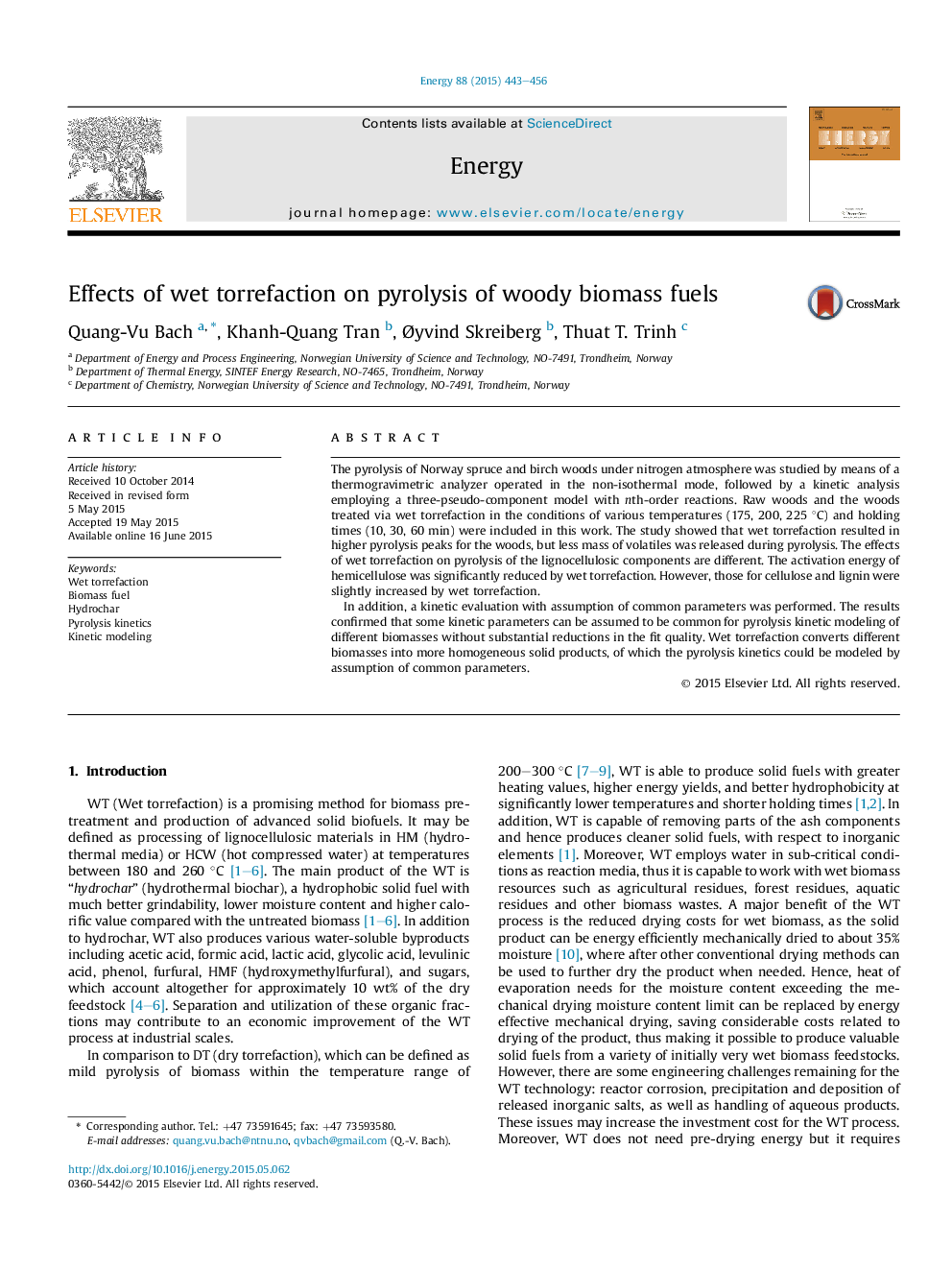| کد مقاله | کد نشریه | سال انتشار | مقاله انگلیسی | نسخه تمام متن |
|---|---|---|---|---|
| 1732157 | 1521458 | 2015 | 14 صفحه PDF | دانلود رایگان |
• Torrefaction temperature and holding time significantly influence the pyrolysis reactivity and kinetics of woody biomass.
• Mass fraction and activation energy of hemicellulose are significantly reduced by wet torrefaction.
• Activation energies for cellulose and lignin are slightly increased by wet torrefaction.
• Some kinetic parameters could be assumed common without substantial reductions in the fit quality.
The pyrolysis of Norway spruce and birch woods under nitrogen atmosphere was studied by means of a thermogravimetric analyzer operated in the non-isothermal mode, followed by a kinetic analysis employing a three-pseudo-component model with nth-order reactions. Raw woods and the woods treated via wet torrefaction in the conditions of various temperatures (175, 200, 225 °C) and holding times (10, 30, 60 min) were included in this work. The study showed that wet torrefaction resulted in higher pyrolysis peaks for the woods, but less mass of volatiles was released during pyrolysis. The effects of wet torrefaction on pyrolysis of the lignocellulosic components are different. The activation energy of hemicellulose was significantly reduced by wet torrefaction. However, those for cellulose and lignin were slightly increased by wet torrefaction.In addition, a kinetic evaluation with assumption of common parameters was performed. The results confirmed that some kinetic parameters can be assumed to be common for pyrolysis kinetic modeling of different biomasses without substantial reductions in the fit quality. Wet torrefaction converts different biomasses into more homogeneous solid products, of which the pyrolysis kinetics could be modeled by assumption of common parameters.
Journal: Energy - Volume 88, August 2015, Pages 443–456
